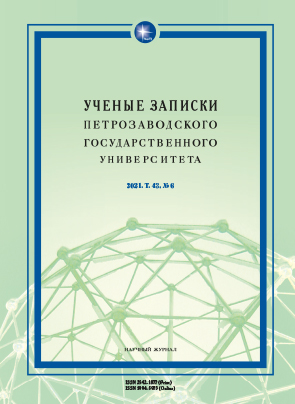СЕВЕРО-ВОСТОЧНЫЕ ЗЕМЛИ РУССКОГО ЦАРСТВА В ТИТУЛЬНОЙ ТЕРРИТОРИАЛЬНОЙ ГЕРАЛЬДИКЕ XVI–XVII ВЕКОВ
NORTHEASTERN LANDS OF THE RUSSIAN TSARDOM IN TERRITORIAL TITULAR HERALDRY OF THE XVI–XVII CENTURIES
Author(s): Evgeniy V. PchelovSubject(s): History, Cultural history, Museology & Heritage Studies, Economic history, 16th Century, 17th Century
Published by: Петрозаводский государственный университет
Keywords: heraldry; Moscow Tsardom; title; territories; emblem studies;
Summary/Abstract: The article presents the study of the territorial coats of arms of the XVI and the XVII centuries used to identify the lands in the Pre-Urals and Trans-Urals that gradually entered the sphere of influence of the Moscow state. The author focuses on the complex of six such coats of arms – for Yugra, Perm, Vyatka, Udoria, Obdoria and Kondia territories. The author aims to trace the history of these coats of arms and the evolution of their images, as well as identify the principles according to which these coats of arms were formed and changed. The complex of territorial coats of arms is closely connected with the history of the Tsar’s title. As early as in the middle of the XV century, the Moscow Principality established a protectorate over the lands of Vyatka and Perm, after which their names were added to the territorial title of the Russian sovereigns that was being formed. The reason for a new version of the territorial title (1484) was the successful march on Yugra, and new names of the lands of this region were included into the title after the campaign of 1499–1500. Thus by 1514, the complex of titular names that served as the object of this research was formed. The first heraldic seals of these lands are known from the second half of the XVI century and are depicted on the Great Seal of Ivan the Terrible dating back to the late 1570s. The images on them were connected with hunting, which was a traditional occupation for these territories where people mainly hunted for fur animals. In other words, the first heraldic images symbolized local natural and economic characteristics. However, during the reign of Mikhail Fyodorovich new symbols were gradually added to the old coats of arms, and in the 1670s some totally new coats of arms were created (some of them were influenced by western European heraldry). As a result, the semantics of the coats of arms of these lands became more complicated. Christian symbolism was strengthened, and such Christian symbols as the cross and the Gospel appeared on several coats of arms. This process also affected other titular coats of arms of the Moscow Tsardom. Initial heraldic visualization of regional characteristics was supplemented with national religious and ideological emblems.
Journal: Ученые записки Петрозаводского государственного университета
- Issue Year: 43/2021
- Issue No: 6
- Page Range: 101-106
- Page Count: 6
- Language: Russian

